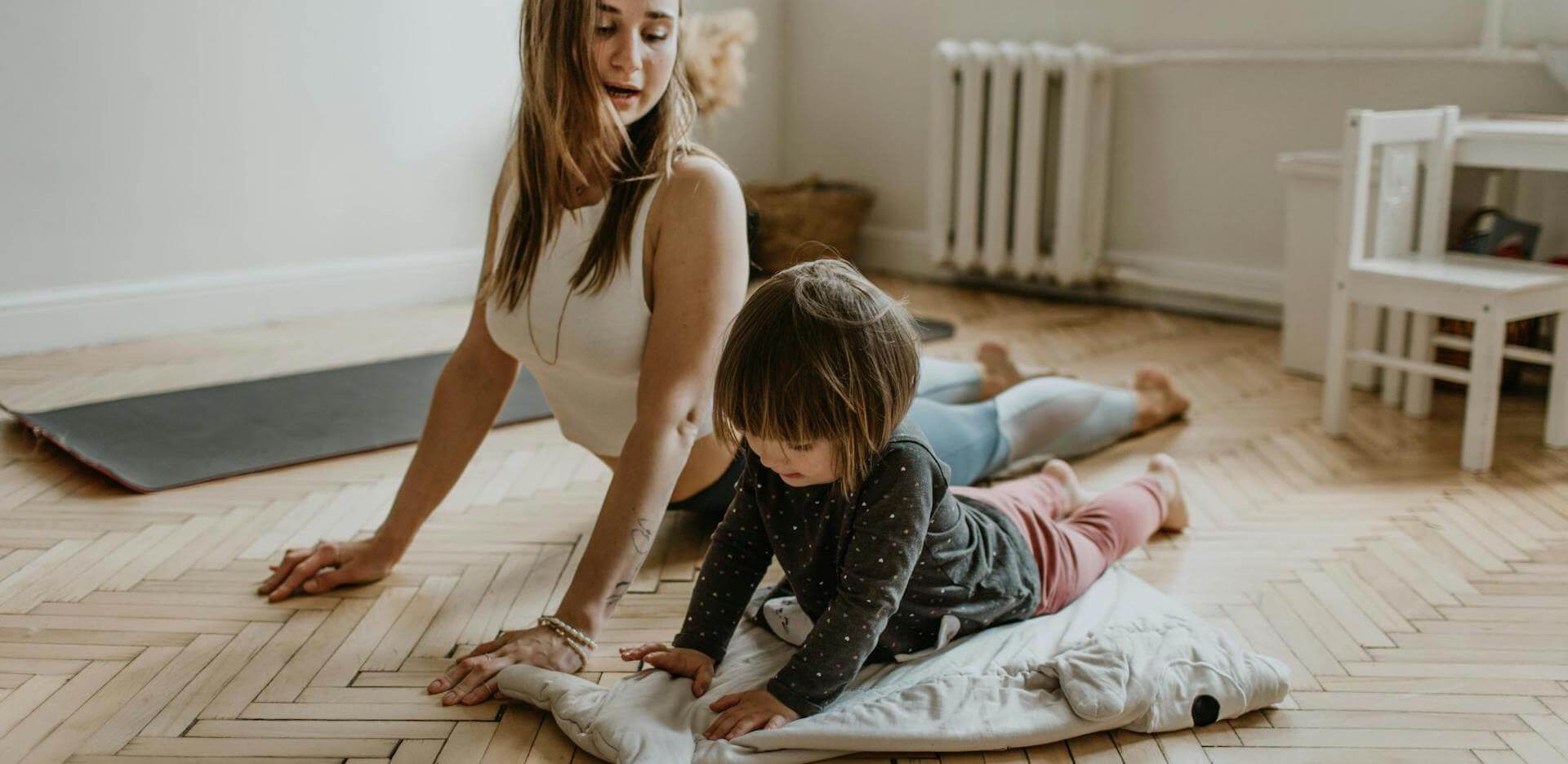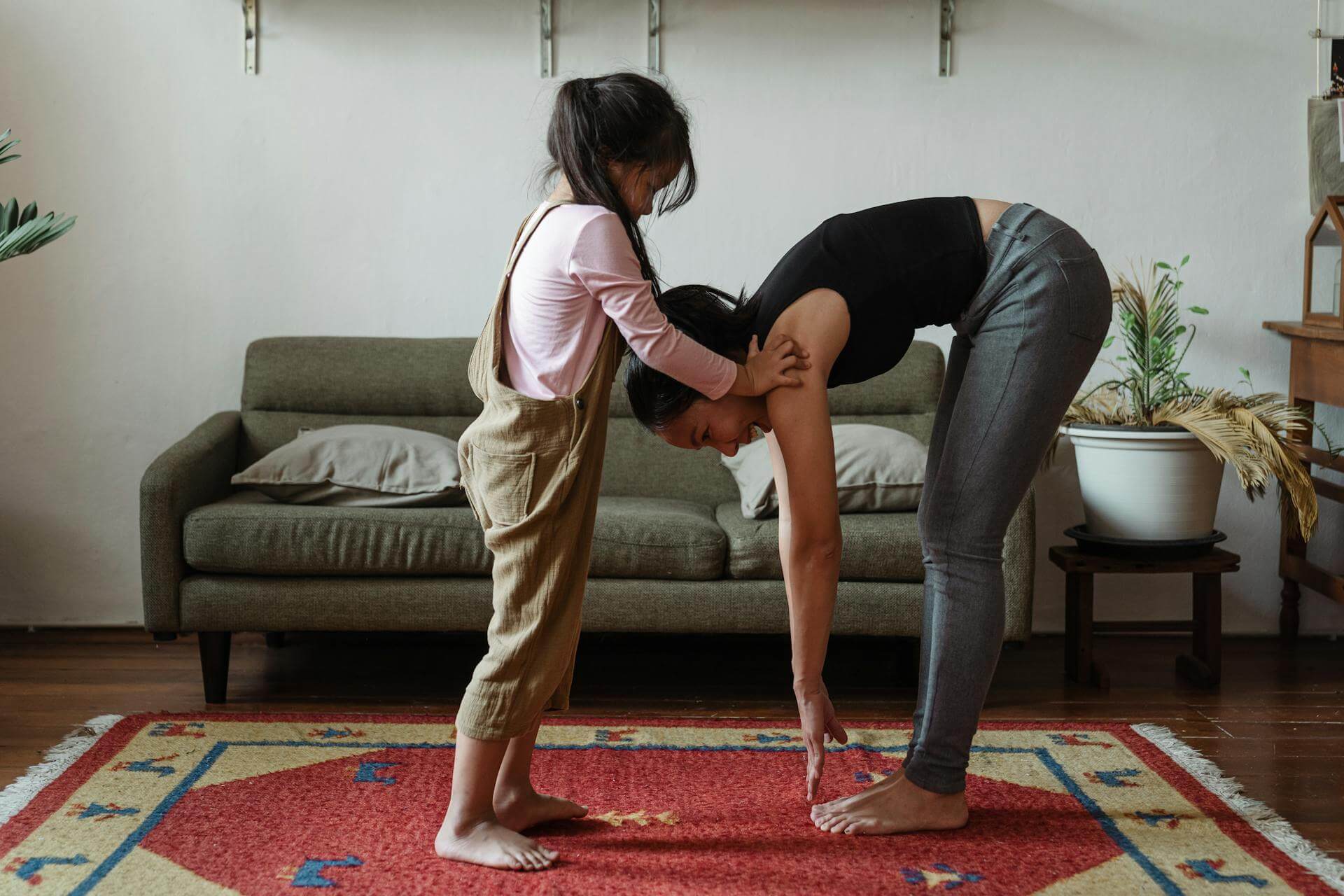
Yoga for Kids: Fun Poses and Activities
The benefits of yoga for kids can’t be overstated. Yoga offers physical benefits by helping to improve flexibility, strength, and balance, which are crucial for a child’s overall physical development.
Regular practice can enhance coordination, balance and gross motor skills, which makes it easier for children to engage in other physical activities such as team sports. Yoga also offers mental benefits by fostering concentration and focus. This is especially helpful for children, as they tend to have short attention spans and are developing life skills such as patience. Yoga also helps kids to build confidence and see the benefits of continued practice, as they see their skills develop when they get better and better at poses that may have been difficult for them when they first started.
Throughout a yoga class, kids have the opportunity to practice breathing exercises and body awareness that can help them develop coping skills to use in the real world, such as within their classrooms, in order to reduce stress and create a sense of calm.
Creating a Kid-Friendly Yoga Environment
Making yoga appealing to kids starts with creating an environment that feels inviting and fun. You can start by choosing a comfortable space where kids have enough space to move freely, whether that be a gymnasium, an outdoor greenspace, or a living room with the furniture moved to the edges of the room. If you have a budget for new supplies, purchasing colorful mats and blocks can help set the stage for a fun yoga class.
No matter the setting, kids often enjoy music. When teaching yoga for kids, choose upbeat music that can energize the class with a few soothing songs toward the end of the class to encourage relaxation. If current hit songs or songs with lyrics are too distracting for your students, you might choose instrumental versions of songs to best keep your class on track while still having fun.
Tips for Teaching Yoga to Kids
Teaching yoga to kids requires some different strategies than teaching yoga to adults.First and foremost, it is important to keep instructions as simple and clear as possible. Use straightforward language and always demonstrate poses to make instructions easy to follow with these verbal and visual cues paired together. Acknowledge that yoga can be challenging, and be sure to encourage your students and celebrate their efforts rather than focusing on the perfect expression of a pose. Praise and recognition helps kids build confidence, and serves as a reminder that for many things in life, focusing on the effort and not the outcome can make things more enjoyable.
It is also essential when teaching yoga to kids to always have a back up plan. If you give directions for an activity and it becomes clear that the class does not enjoy it, does not understand it, or is becoming off task or unruly in the activity, it’s important to always have other ideas lined up in case you need to pivot and try something else!
Fun Yoga Poses for Kids
To keep yoga engaging, it's essential to choose poses that are fun, easy enough that they are able to find success, and easily modified to adjust the difficulty of poses for students who are more advanced or are new to yoga.
Since many kids love animals, leaning into this theme when teaching yoga can increase engagement and participation. Downward Dog is a staple for any yoga practice, and in a kids class you can get more creative and can encourage your students to “bark” like a dog or wag their imaginary tails as a hip opener and balance challenge. Cat-Cow pose is another great option for kids because it is simple and can be easily enhanced by encouraging kids to add their own sound effects by pretending to be a cat or cow to make this pose more fun. Butterfly pose is an easy one to start the class with that can also encourage kids to use their imaginations and pretend to “flap their wings” and fly to any destination their imagination can conjure up.
You might also include some common nature themed poses, such as Tree pose and Mountain pose. In Tree pose, students can imagine themselves as a strong, steady tree with branches reaching for the sky or sticking out in any direction. In Mountain pose, kids can close their eyes and imagine themselves as a mountain, using visualization to imagine their feet heavy like the earth and strong arms firmly at their sides.
Yoga Games
For older kids, playing games in yoga class can be a great way to help them feel motivated and get more involved with others in the room. You can play a “Freeze” game, by playing music and letting the kids dance around on their mats. Then when the music stops, they have to freeze into a yoga pose of their choosing.
You might also include a “Choice” game in class by having cards with different yoga poses on them and asking students one by one to pick a card for the class, then helping to lead that pose (with the teacher’s help of course) for the group.

Yoga with a Buddy
Yoga can be a great individual activity for kids to learn how to breathe and find a sense of calm, and it can also be used as a great opportunity to build social skills and teamwork. Some partner poses that can be fun for kids to try can be “Forrest pose,” a fun twist on Tree pose. In this pose, kids pair up with a peer in the class and try to balance together in tree pose by maybe holding hands or standing back-to-back.
Another fun partner activity can be “Follow the Leader,” in which students pair up or work in small groups and one child leads by performing yoga poses while the others mirror each pose. This activity aims to improve focus and coordination while allowing kids to choose the poses that they enjoy and sharing them with others.
Incorporating Mindfulness
Mindfulness is an essential skill for adults and kids alike to effectively manage emotions and bring ourselves back into the present moment in times of stress or distraction.
One great way to teach the concept of Mindfulness to kids during a yoga class, is by using “Breathing Buddies.” For this activity, you would need to have some stuffed animals available, or ask each student to bring their own to class, then have each student lie on their back and place their stuffed animal on their belly. Guide the students to breathe in and out, and notice their stuffed animal rise and fall as they breathe. This is a great way to help kids focus on their breath, while having the added calming benefit of some cuddle time with a soft toy.
Yoga is a tried and true way to foster physical, mental, social, and emotional development. Because yoga is so versatile, you can make yoga enjoyable for kids of all ages and help foster a lifelong appreciation for the benefits of yoga by incorporating fun poses and engaging activities in your classes.


